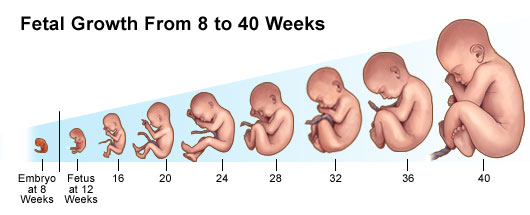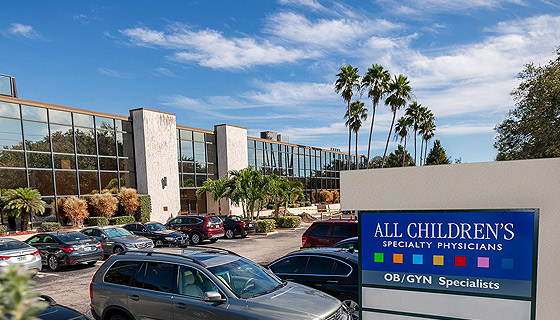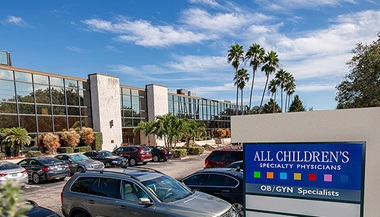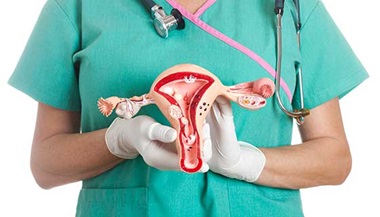The First Trimester
What You Need to Know
- At your first prenatal visit, you will undergo a physical exam as well as certain tests and screenings to assess the health of you and your unborn baby.
- First trimester symptoms vary from woman to woman, with some experiencing all known symptoms and others only a few. Duration of symptoms can vary as well.
- After eight weeks, the embryo is referred to as a fetus.
- Although the fetus is only 1 to 1.5 inches long at this point, all major organs and systems have been formed.
- During the first trimester, the fetus is most susceptible to damage from substances, like alcohol, drugs and certain medicines, and illnesses, like rubella (German measles).
Your First Prenatal Visit
Your first prenatal visit is the most thorough. A complete medical history is taken, a physical exam is done, and certain tests and procedures are performed to assess the health of both you and your unborn baby. Your first prenatal visit may include:
-
Personal medical history. This may include taking record of any of the following:
-
Previous and current medical conditions, like diabetes, high blood pressure (hypertension), anemia and/or allergies
-
Current medicines (prescription, over-the-counter and nutritional supplements)
-
Previous surgeries
-
-
Maternal and paternal family medical history, including illnesses, intellectual or developmental disabilities, and genetic disorders, like sickle cell disease or Tay-Sachs disease
-
Personal gynecological and obstetrical history, including past pregnancies (stillbirths, miscarriages, deliveries, terminations) and menstrual history (length and duration of menstrual periods)
-
Education, including a discussion regarding the importance of proper nutrition and expected weight gain in pregnancy; regular exercise; the avoidance of alcohol, drugs and tobacco during pregnancy; and a discussion of any concerns about domestic violence
-
Pelvic exam. This exam may be done for one or all of the following reasons:
-
To note the size and position of the uterus
-
To determine the age of the fetus
-
To check the pelvic bone size and structure
-
To perform a Pap test (also called Pap smear) to find the presence of abnormal cells
-
-
Lab tests, including the following:
-
Urine tests. These are done to screen for bacteria, glucose and protein.
-
Blood tests. These are done to determine your blood type.
-
All pregnant women are tested for the Rh factor during the early weeks of pregnancy. Rh incompatibility happens when the mother’s blood is Rh-negative, the father’s blood is Rh-positive and the fetus’ blood is Rh-positive. The mother may make antibodies against the Rh-positive fetus, which may lead to anemia in the fetus. Incompatibility problems are watched and appropriate medical treatment is available to prevent the formation of Rh antibodies during pregnancy. There are also other blood antibodies that may cause problems in pregnancy that are screened for on the first visit.
-
-
-
Blood screening tests. These are done to find diseases that could have an effect on the pregnancy. One example is rubella, an infectious disease that is also called German measles.
-
Genetic tests. These are done to find inherited diseases, like sickle cell disease and Tay-Sachs disease.
-
Other screening tests. These are performed to find infectious diseases, like sexually transmitted diseases and urinary tract infections.
The first prenatal visit is also an opportunity to ask any questions or discuss any concerns that you may have about your pregnancy.
The First Trimester: What to Expect
A healthy first trimester is crucial to the normal development of the fetus. You may not be showing much on the outside yet, but on the inside, all of the major body organs and systems of the fetus are forming.
As the embryo implants itself into the uterine wall, several developments take place, including the formation of the:
-
Amniotic sac. A sac filled with amniotic fluid, called the amniotic sac, surrounds the fetus throughout the pregnancy. The amniotic fluid is liquid made by the fetus and the amnion (the membrane that covers the fetal side of the placenta) that protects the fetus from injury. It also helps to regulate the temperature of the fetus.
-
Placenta. The placenta is an organ shaped like a flat cake that only grows during pregnancy. It attaches to the uterine wall with tiny projections called villi. Fetal blood vessels grow from the umbilical cord into these villi, exchanging nourishment and waste products with your blood. The fetal blood vessels are separated from your blood supply by a thin membrane.
-
Umbilical cord. The umbilical cord is a ropelike cord connecting the fetus to the placenta. The umbilical cord contains two arteries and a vein, which carry oxygen and nutrients to the fetus and waste products away from the fetus.
It is during this first trimester that the fetus is most susceptible to damage from substances, like alcohol, drugs and certain medicines, and illnesses, like rubella (German measles).
During the first trimester, your body and your baby’s body are changing rapidly.
Johns Hopkins Hospital Designated as Baby-Friendly

The Baby-Friendly Hospital Initiative, a global program launched by the World Health Organization and the United Nations Children’s Fund, has designated The Johns Hopkins Hospital as Baby-Friendly. This designation is given to hospitals and birthing centers that offer an optimal level of care for infant feeding and mother-baby bonding.
The First Trimester: Changes to Your Body
During pregnancy, many changes will happen to your body to help nourish and protect your baby. Women experience these changes differently. Some symptoms of pregnancy continue for several weeks or months. Others are only experienced for a short time. Some women experience many symptoms, and other women experience only a few or none at all. The following is a list of changes and symptoms that may happen during the first trimester:
-
The mammary glands enlarge, causing the breasts to swell and become tender in preparation for breast-feeding. This is due to an increased amount of the hormones estrogen and progesterone. A supportive bra should be worn.
-
Your areolas (the pigmented areas around each breast’s nipple) will enlarge and darken. They may become covered with small, white bumps called Montgomery’s tubercles (enlarged sweat glands).
-
Veins become more noticeable on the surface of your breasts.
-
The uterus is growing and begins to press on your bladder. This causes you to need to urinate more often.
-
Partly due to surges in hormones, you may experience mood swings similar to premenstrual syndrome, a condition experienced by some women that is characterized by mood swings, irritability and other physical symptoms that happen shortly before each menstrual period.
-
Increased levels of hormones to sustain the pregnancy may cause “morning sickness,” which causes nausea and sometimes vomiting. However, morning sickness does not necessarily happen just in the morning and rarely interferes with proper nutrition for the mother and her fetus.
-
Constipation may happen as the growing uterus presses on the rectum and intestines.
-
The muscular contractions in the intestines, which help to move food through the digestive tract, are slowed due to high levels of progesterone. This may, in turn, cause heartburn, indigestion, constipation and gas.
-
Clothes may feel tighter around the breasts and waist, as the size of the stomach begins to increase to accommodate the growing fetus.
-
You may experience extreme tiredness due to the physical and emotional demands of pregnancy.
-
Cardiac volume increases by about 40 to 50 percent from the beginning to the end of the pregnancy. This causes an increased cardiac output. An increased cardiac output may cause an increased pulse rate during pregnancy. The increase in blood volume is needed for extra blood flow to the uterus.
The First Trimester: Fetal Development
The most dramatic changes and development happen during the first trimester. During the first eight weeks, a fetus is called an embryo. The embryo develops rapidly and by the end of the first trimester, it becomes a fetus that is fully formed, weighing approximately 0.5 to 1 ounce and measuring, on average, 3 to 4 inches in length.

First Trimester Fetal Growth and Development Benchmarks
The chart below provides benchmarks for most normal pregnancies. However, each fetus develops differently.
| Timing | Development Benchmark |
|---|---|
| By the end of four weeks |
|
| By the end of eight weeks |
|
| From embryo to fetus |
|
| During weeks nine to 12 |
|
The fetus is most vulnerable during the first 12 weeks. During this period of time, all of the major organs and body systems are forming and can be damaged if the fetus is exposed to drugs, infectious agents, radiation, certain medications, tobacco and toxic substances.
Even though the organs and body systems are fully formed by the end of 12 weeks, the fetus cannot survive independently.






